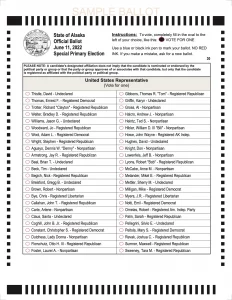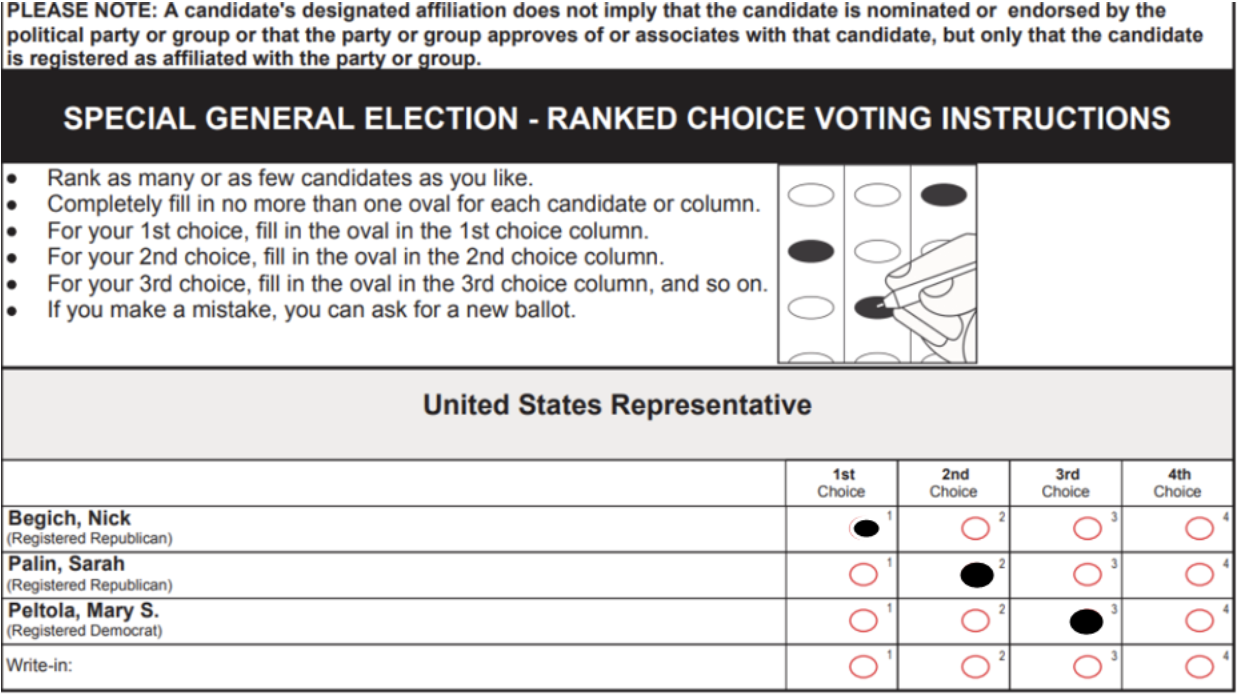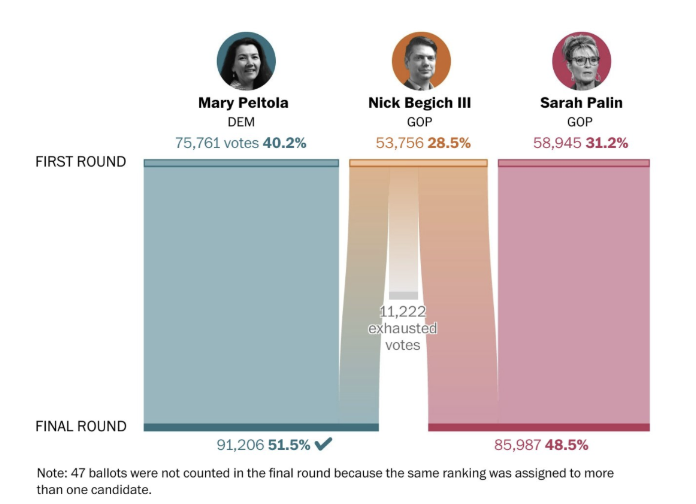By AM Benjamin
The 2022 midterms have been receiving an inordinate amount of attention lately. Much of the focus is devoted to the rat-race between Democrats and Republicans in the respective House, Senate, and Governors’ races. Yet there is one state that is receiving quite a bit of national attention given its non-Swing state status: Alaska. There are several factors that make this upcoming election cycle unique for “The Last Frontier State.”
- The First Senate Race for a GOP member who voted to convict Trump
Senator Murkowski, a known Republican moderate, was part of a cohort of 7 Republican Senators who voted to convict Trump in 2021 for his actions on January 6. She is also the only one in that group who is up for re-election in 2022 and many questioned whether she could survive considering he made her one of his top targets for the 2022 primary cycle. Murkowski did eventually prevail thanks to the uniqueness of Alaska’s new primary system (see item #3).
- An Open House Seat
The death of Don Young, one of the oldest serving Representatives in Congress, created a vacancy for this Alaska house seat…the first time in 50 years. Another layer of intrigue was the re-entry of Sarah Palin into Alaska politics. A once rising political star after the 2008 election, and an influential leader in the Tea Party movement, Palin has since seen her political relevance fade as she has focused more on fostering a career in reality TV and political commentary. Despite her prominence in the conservative movement, there is also reason to believe that many Alaskans view her as a carpetbagger thus casting doubt on whether a political revival was possible. This along with some other factors may have played a role in her recent loss in the Special Election.
- The introduction of Top 4 primaries
The Top 4 system involves two important features of political reform: (a) Non-partisan Primary, where all candidates across the political spectrum compete for a spot in the General Election. (b) General Election decided by ranked choice voting. To better understand the Top 4, I use the current special election as a case study.
How Top 4 Worked in the Alaska Special Election
Part 1: The Non-Partisan Blanket Primary
Candidates competed in the Alaska Special Election. Voters do not have to register with any political parties in order to participate in the primary. They can vote for candidates with any affiliation, but they must choose only one. The top 4 vote getters then advance to compete in the general election.
On June 11th, the results of the Alaska At-Large congressional district primary were announced The Top 4 Candidates included Palin (27.0%), Begich (19.1%) – both Republicans, as well as Independent Al Gross (12.6%) and Democrat Mary Peltola (10.1%). The votes for these top four vote getters accounted for almost 70% (68.8%) of all primary voters. 5th place contender, Tara Sweeney, and forty-three other primary candidates, were eliminated.

Alaska June, 2022 Congressional primary ballot
Shortly after the primary, Gross dropped out of the race. Alaska election rules do not allow fifth place candidates to advance in lieu of these sorts of changes. Thus in a weird twist, the nation’s first ever Top 4 general election became a “Top 3.”
Part 2: Ranked Choice Voting in the General Election
The special election to replace Don Young’s now vacant Congressional Seat was held on August 16, a day that was a primary day for all other Alaska offices (Governor, Senate).

Special Election Ballot Sample Ballot- Alaska (Source: Sightline Institute)
The image provides a sample ballot of how the Special General Election Ballot appeared for Alaskan voters. Voters had to rank the candidates in order of preference. For instance, in the ballot above if a voter wanted to vote for Nick Begich, she would mark Nick Begich as first choice (seen above). She would then have to decide who she would prefer among the remaining candidates as her second and third choice. In the example, the voter has ranked Sarah Palin (R) as her second and Mary Peltola as her third choice.
What if the voter chooses not to rank candidates? Sarah Palin famously declared she was doing this and only voted for herself. In the RCV world, this is known as an exhausted ballot and those types of ballots have implications for the race.
First Round of the Top 4 special general election
The first phase of a Top 4 general election is counting all voter’s first choice votes. The lowest placed candidate is eliminated in each round. This candidate’s second place votes are then allocated to the remaining candidates until one candidate reaches 50%. The below image shows the results after most of the first-choice results were tallied on August 17. As Nick Begich received the least amount of votes as the third place candidate, he was eliminated.
Second Round of the Top 4 special general election
The next phase of the Top 4 general election involves counting all ‘second’ place votes from the eliminated candidate. Let’s go back to our example with the voter who initially cast her vote for Nick Begich. Now that he has been eliminated, what happens to her ballot? According to the rules of RCV, her second choice must now be considered. The balloy illustrates that now that Nick Begich has been eliminated, our sample voter’s second choice is counted as a vote for Sarah Palin.

How a Sample Ballot as calculated after Nick Begich was eliminated
The Results of the General Election
As there were only three candidates in the Alaska Special Election, the election consisted of only two rounds. On August 31, Alaska was finally able to finish tabulating the results. Peltola received enough of Nick Begich’s second place votes to reach the 50% threshold, thereby winning the election.
Peltola’s win may not have been a complete surprise, but her victory did capture the attention of many people around the country. As Alaska is generally still considered a ‘red state’, some were quick to dismiss the outcome as convoluted or rigged. An analysis of the initial polls indicated, however, that if the election came down to Peltola vs Palin, Petola would prevail. And while she is a Democrat, Peltola had a legislative record for being one of the most conservative Democrats in Alaska, thus potentially cementing her credentials with many independents/unaffiliated voters. This graphic from the Washington Post further illustrates how Nick Begich’s ballots were allocated for the final round. It offers a great visualization of how the Alaska Native was able to secure victory.

Breakdown of how Nick Begich III’s allocation of second round votes (included Exhausted votes)
The new Top 4 RCV election represents an important step in the right direction towards America exploring superior electoral reform options. Top 4 (and its cousin Final 5) are potential models that can easily be replicated in other states. It may take a couple more elections in Alaska before we fully understand the implications of this new voting method, but promising benefits of greater voter choice and incentives for candidates to appeal to the broad majority of the electorate are already becoming visible.
The views and opinions expressed in this article are those of the authors and do not necessarily reflect the official policy or position of Rank the Vote, its members, supporters, funders, or affiliates.






